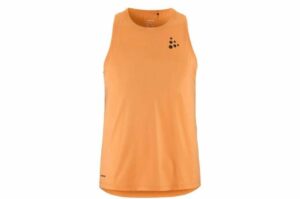New research finds no evidence popular sports products work
British researchers investigate the science behind the claims of popular sports drinks and equipment, to find very little evidence they work as advertised.
When you’re buying new running shoes, energy drinks, gels, compression socks, etc., you usually believe in the science behind the product’s claim. Specially designed shoes will help you stave off injuries and make you faster, energy drinks will replenish the depleted energy reserves, compression garments will improve performance and recovery. It turns out that many of these claims are, actually, not funded on sufficient scientific research.
British broadcaster BBC and the British Medical Journal conducted an investigation into the claims made by various sports equipment makers as to how much their products improve performance. The researchers were looking into 431 claims in 104 sport product ads, and found a “worrying” lack of high-quality research. They are calling for better studies to help inform consumers.
Oxford University’s Centre for Evidence-Based Medicine, led by Dr Carl Heneghan, did the independent research. The British newspaper the Guardian writes, “Dr Heneghan’s team concluded that there is a striking lack of evidence to support the vast majority of sports-related products that make claims related to enhanced performance or recovery, including drinks, supplements and footwear.”
The extensive results of the study are published in several articles in the British Medical Journal. Let’s dig into a part of this investigation and see what they found out.
In this article, the Oxford University team said they were searching for the evidence that will prove six most pertinent claims in terms of sports performance.
1. The color of urine accurately reflects hydration.
The article states: “Athletes are advised to observe urine output over the course of a day and notice changes in urine flow and colour. Output volume and frequency should be consistent and the colour should be getting lighter towards the end of the day, aiming for the last outputs of the day being close to clear.”
After examining existing evidence to this claim, the researchers found that there’s not enough proof that urine color is accurate marker of hydration for the general population. For professional athletes there’s only limited evidence showing that first morning urine colour can be used to assess the level of hydration. Overall, the Oxford team calls for a high quality study in the use of urine color as a hydration marker.
2. Drink before feeling thirsty (pre-hydrate) – the claim energy drink makers would want us to believe.
The conclusion is that, for the general public, drinking before feeling thirsty may actually worsen your performance and creates a small but serious risk of hyponatraemia. You should heed what your body tells you, and drink when you feel thirsty. Even professional athletes perform best when they drink to thirst.
3. Energy drinks with caffeine and other compounds improve sports performance.
For the general public and elite athletes the conclusion was the same – there’s limited, low-quality evidence that such drinks improve strength performance and aerobic and anaerobic endurance. No studies compare the effectiveness of these products with ingesting caffeine alone. There are important concerns regarding potential harm as well.
4. Carbohydrate and protein combinations improve post-workout performance and recovery.
For the general public there’s a lack of evidence that carbs and protein rich supplements improve recovery and reduce muscle breakdown. For elite athletes studies do not show benefits greater than a balanced and nutritious diet can provide.
5. Branched chain amino acids improve performance or recovery after exercise.
The research team found no evidence that chain amino acids enhance performance and recovery for the general population. With elite athletes, no evidence has been found about enhanced performance in competition. There was, however, limited proof that amino acids may reduce muscle soreness and shorten recovery.
6. Compression garments improve performance or enhance recovery.
The team found no proof of improved performance for either the general public or elites. In terms of recovery, the compression garment “may reduce muscle soreness if worn for 24 hours after an exercise session, but seems to work no better than other recovery strategies such as low grade exercise or contrast bathing. Potential adverse effects of compression garments may include increased skin temperature, decreased thermoregulation, and reduced range of motion.”
So, what does all that mean for the general public, which means you and me? Mostly, there’s not enough scientific proof that those expensive drinks, gels and other products do what they claim to do.
Dr Colin Cable, the pharmaceutical science information officer at the Royal Pharmaceutical Society told the Guardian “for the vast majority of sporting participants, it is questionable whether any form of supplementation will be necessary, as a healthy balanced diet will provide their body’s requirements for protein, carbohydrate, vitamins and minerals.”
And, what about those expensive special running shoes?
The BBC quotes Professor Benno Nigg of the University of Calgary in Canada, who has been studying the biomechanics of running for over 40 years. He says “the most important predictors for injuries are distance, recovery time, intensity and those type of things… the shoes come much, much later as minor contributors.”
Professor Nigg’s advice to runners buying shoes is fairly straightforward: “if you can find a shoe where you just enjoy that activity and you are comfortable, that’s all you need.”

